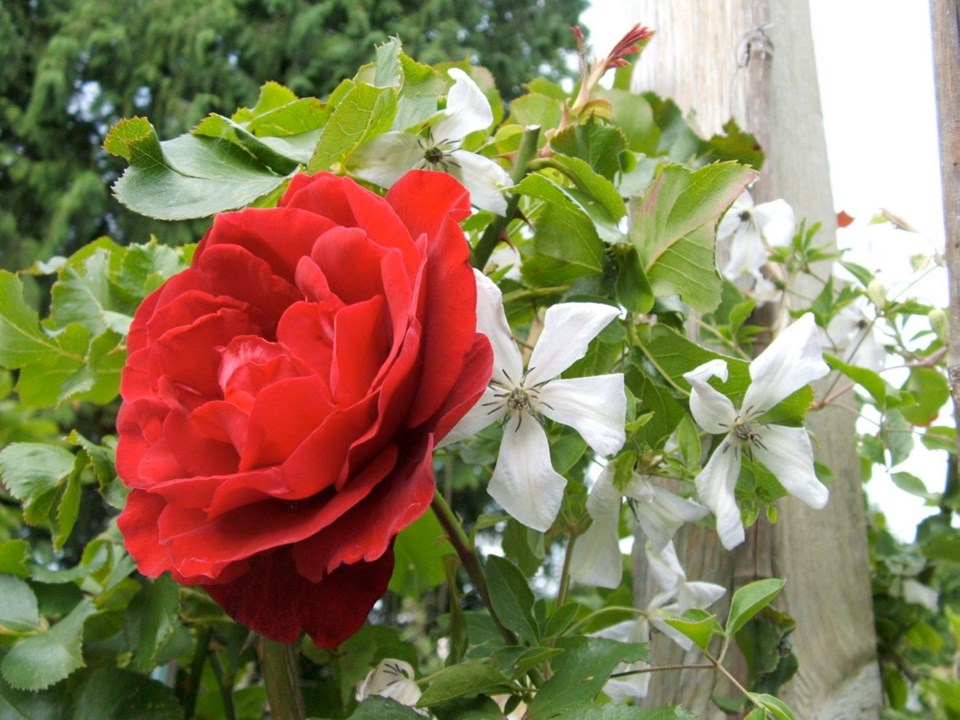Dear Helen: What kind of seeds or tiny bulbs should we purchase to grow the green salad onions often seen in food markets in the spring?
D.W.
Dear D.W.: The slim, long green onions with white flesh at the root ends are known by different names — green, salad, spring or bunching onions, or scallions. They can be grown from seed or from tiny purchased bulbs for planting (“sets”).
For the very earliest green onions, purchase and plant sets early, this month if the weather permits, or in March. Plant them closer together than directions suggest. Those directions will be allowing space for bulb formation and expansion.
Or, plant close together and thin as you pull young plants for salad onions, leaving enough space for the remaining plants to develop bulbs for harvesting in August or early September.
Depending on where you shop, you will have a choice of white, yellow, red or Spanish onion sets. The Spanish, followed by the red, are most likely to give the sweetest, mildest flavours.
You can also grow green onions from seed sown outdoors early in the spring. Look among the onion seeds on racks for bunching types or scallions. In catalogues, you’ll find a separate section among the onions for scallions or bunching onions. Descriptions (and seed packets) will indicate which varieties will develop slightly swollen bases or small bulbs and which will stay straight.
Included in some catalogue selections will be a red-fleshed variety. Stokes Seeds lists eight white bunching onions, a dual-purpose (bunching and bulb) type, and two that can be sown in spring and again in the fall for over-wintering and early spring onions.
Dear Helen: I’m thinking about purchasing a shrub-type clematis, but wonder whether the deer will be attracted to and eat the plant.
M.M.
Dear M.M.: From everything I’ve heard and read, clematis is a deer delicacy. Last summer, a gardener told me he protected a treasured clematis by planting a few cloves of garlic around it, but I can’t guarantee that would work everywhere.
One of my friends successfully protects another deer favourite — lilies — by planting lavender around the plants. Pungent Mediterranean herbs such as thyme and rosemary would also probably repel the deer.
Exclusion is another option, in the form of a physical barrier such as a circle of chicken wire.
Dear Helen: Because I have a small garden, I’ve been trying to save space by growing some of my tomatoes in large pots and potatoes in burlap bags, using regular potting soil. The results have been far less successful compared with the same plants in the open garden. What should I be adding to the potting soil?
A.N.
Dear A.N.: Burlap bags are used for storing potatoes. They suit this purpose because they breathe freely.
That makes them perhaps not so good for summer growing because of rapid moisture loss through the loosely woven fabric. I had good results using a set of three reusable potato grow bags (West Coast Seeds) last summer.
For the best possible staying power and productivity from a planting mix, I blend roughly equal amounts each of a general-purpose growing medium (substrate) such as ProMix BX (basic mix) and a bagged, all-purpose, sterilized soil such as Island’s Finest Premium Sterilized Potting Soil. Brands at your local stores will vary. The main thing is to look for the designation “all purpose.”
I usually add a little vermiculite or coir (coconut fibre) for added moisture retention in summer planters. For fertilizer, I prefer natural-source, slow-release types, available at most garden centres and farm supply stores. I add lime for the potted tomatoes but not for the potatoes.
GARDEN EVENTS
Peninsula meeting. The Peninsula Garden Club will meet on Monday, Feb. 8, at 7 p.m. in the Mary Winspear Centre in Sidney. Linda Petite, head gardener at the Horcitultural Centre of the Pacific, will speak about the best methods for growing plants from seed. The timing is perfect, with the planting season about to begin. Visitors are welcome. Non-member drop-in fee is $5.
VIRAGS meeting. The Vancouver Island Rock and Alpine Garden Society will meet on Tuesday, Feb. 9, at 7:30 p.m. in Gordon Head United Church, 4201 Tyndall Ave. in Victoria. Doors open at 7. The speaker for the meeting will be the society’s president, Janice Currie, who will speak about her recent plant-hunting trip to South Africa. Visitors are most welcome, at no admission cost.



